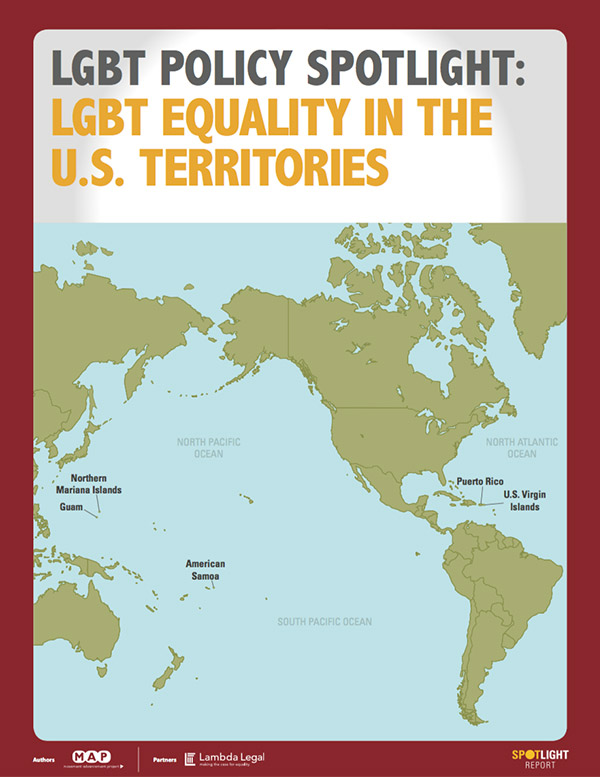The Bottom Line
The United States' long history of territorial expansion has resulted in a truly complicated system of governance for territory residents, where even the U.S. Constitution doesn’t always apply. Examining each of the five territories across the more than 38 laws and policies tracked by MAP offers just one metric of LGBT people’s experiences in these territories.
MAP classifies various laws and policies that impact LGBT people into two broad categories: sexual orientation-related laws and policies, and gender identity-related laws and policies. Examined together, these polices are combined to calculate an “Overall Policy Tally.”
- Puerto Rico has the highest overall LGBT policy tally of the five territories (21.75 out of a potential 40.5) as well as the highest sexual orientation policy tally (11.5/20) and gender identity policy tally (10.25/20.5). Based on its LGBT-related laws and policies, Puerto Rico has a similar overall LGBT policy tally as Maine and Delaware.
- Guam, the U.S. Virgin Islands, American Samoa, and the Northern Mariana Islands all have a “low” LGBT policy tally. American Samoa and the Northern Mariana Islands have the same overall policy tally as Alaska (0.5/40.5), while the U.S. Virgin Islands (5.5/40.5) falls between Arizona and Kentucky. Guam (7/40.5) falls between Kentucky and Indiana.
- Guam has a “medium” sexual orientation policy tally identical to that of Pennsylvania and Michigan, while the other three territories have “low” sexual orientation policy tallies. Notably, both Guam and the Northern Mariana Islands have “negative” gender identity policy tallies similar to Arizona and Wyoming, respectively. American Samoa and the U.S. Virgin Islands have “low” gender identity policy tallies.
In addition, the report looks at seven broad categories including relationship and parental recognition, non-discrimination laws, LGBT youth laws and policies, healthcare laws and policies, criminal justice laws, and accurate identity documents.
LGBT Policy Spotlight: LGBT Equality in the U.S. TerritoriesDownload
Recommended citation:
Movement Advancement Project. June 2019.
LGBT Policy Spotlight: LGBT Equality in the U.S. Territories. https://www.lgbtmap.org/policy-and-issue-analysis/policy-spotlight-us-territories (date of access).


